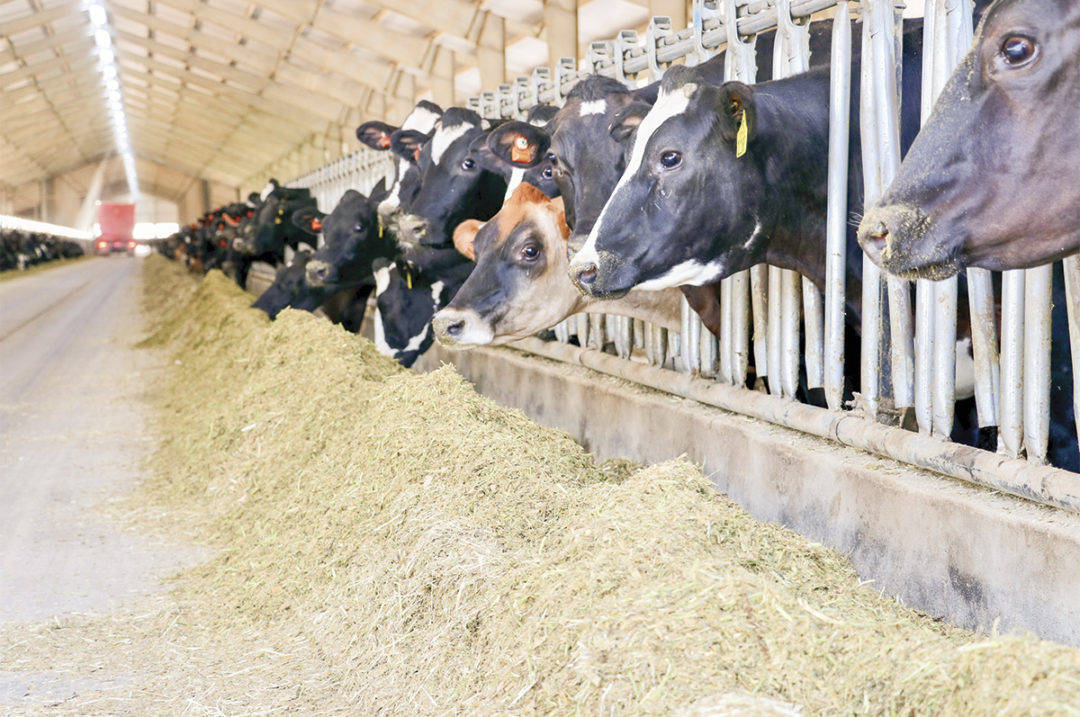A few months ago, I received a call from a dairyman who was having issues with his somatic cell count (SCC). He asked me to look over his feeding program and see if I saw anything that they might be overlooking or that stood out as a problem that might affect somatic cell, mastitis levels, etc.
He sent me all his ration information, ingredients, forage assays, labs fed, premixes and ingredient costs. Nothing was overly unusual, and I was able to make a few adjustments that should have helped his SCC.
The one thing that stuck out to me and which prompted this article was his protein, mineral, vitamin additive premix. I have built many of these over the years but was surprised at the substantial number of ingredients in this mix and the overall cost this mix contributed. When I called the producer back to discuss this situation, I found that he really had no idea what some of the ingredients were or for what they were being used. As I dug into this further, I discovered there were a lot of redundancies and replication, i.e., different products that more or less did the same thing when fed to the cow. A couple of different yeasts, direct-fed microbials (DFMs), other additives and supplements, a number of which I have never heard of.
This is not really an unusual situation. Over the years, I have seen any number of premixes that closely resemble a rocket fuel formula, come with a significant cost and may or may not truly be cost-effective in the feeding program. Frankly, I may have been guilty of building a few of these myself.
Overall, however, many nutritionists – myself included – get wrapped up in adding a plethora of additives since the mill can mix and deliver these fairly easily. Over time, the list of ingredients in a given premix can grow and get to a point where some uncertainty may exist why different products are included.
Evaluate manufactured premixes
Periodically, it makes sense to evaluate any premix that is included in the feeding program. More is not always better, and every ingredient needs to have a place and make a positive contribution to the feeding program. Additionally, it makes sense to take a little time to understand all the ingredients being called for.
This includes not only their function but the cost in the premix and in the overall ration. Products like the DFMs, yeasts, bacteria and enzymes can be very expensive, and all the costs add up. While a lot of additives are fed at very low levels (grams or even milligrams per head per day), it makes sense to evaluate these costs and look to see if there are alternatives that might work as well but are lower in cost.
For instance, currently I have product information, research support and cost data on four different bacillus subtillus (fed bacteria) products that can have a variety of positive effects in the animal. While I must evaluate these side by side, I also need to determine if they will provide an effect above and beyond what I am already formulating in. Additionally, if I consider inclusion of one of these products, will we be able to see an additive effect to what is already being used? Or could it have an antagonistic effect with something else? These are questions your nutritionist needs to be asking, but frankly, since the buck stops with the producer, he needs to ask these questions too.
Some things cannot be simplified. The basic mineral and vitamin supplements require a lot of ingredients, in most cases, to balance for the requirements and the deficiencies common to the forages and feeds used in a typical dairy ration. It does make sense, however, to consider the sources of these nutrients with the best absorption coefficients and those that are the most cost-effective. In many cases, we commonly consider using organic or hydroxychloride sources of trace minerals as part of this supplementation process. But again, the options need to be evaluated periodically as feed and forage ingredients, rations and genetics change.
But to simplify premixes and ensure the best cost is being achieved, it can become necessary to begin backing some ingredients out or at least reducing the feeding rates. A lot of times, as nutritionists, we include an additive based on the company’s recommended feeding rate. Sometimes these feeding rates are not based on actual titration studies that evaluated performance at different feeding rates but are based on market conditions and attempting to get the most product fed possible.
General ration considerations
Just like premixes, overall rations themselves need evaluation and simplification from time to time. It is easy to understand that we often are looking for a way to create the cheapest possible ration while delivering the necessary nutrients to support optimal production. So, in many cases we may use a combination of forages, grains (carbohydrates) and proteins. With today’s sophisticated formulation models, we can set rations up paying attention to a long list of nutrients and formulating diets with exacting precision. In many cases the formulation programs, in an attempt to achieve the least (best) cost solution, will not always pull practical levels of different ingredients. I worked with a guy when I was very new in this business and just learning to formulate who told me “Computers and computer programs do not mix feed or feed cows.”
In other situations, as we evaluate current ingredients alongside prospective others, we might make the call to bring in yet another ingredient (assuming the dairy has the room or can make room) when we see an opportunity to reduce costs to some degree. The question becomes: How much cost reduction justifies adding another ingredient to the ration?
Many farms will use numerous forage sources (silages, hays, straw), grains and grain byproducts, and proteins and protein byproducts in addition to one or more premixes that may deliver the smaller-inclusion ingredients. Keep in mind, each ingredient takes time to load into the mixer, as does moving from the silage piles to the commodity shed and any other ingredient storage location. Plus, between loading, moving, mixing and delivery, a certain amount of diesel is used, and each batch mixed causes some wear and tear on the equipment. Second, addition of each ingredient comes with the potential for variation in the amount added. Also, not all ingredients mix as well as others and a certain degree of separation can occur. Finally, depending on the actual ingredients used and the quality of the mix, it is common to find that cows can effectively sort the ration delivered and consume the preferred ingredients first.
So as more and more ingredients are added to a feeding program, the operational cost of mixing rations increases. This also increases the potential variability of the actual mixes, not just from variation in pounds of a given ingredient added from batch to batch but also the variation within the forages and feed ingredients themselves.
At the end of the day, reducing or eliminating the use of some ingredients may increase the actual feed cost, but the savings in other areas as well as prospective improvements in performance may far outweigh a ration cost increase.
Conclusions
Depending on the circumstances, simplifying the feeding program may be easier said than done. But as every farm strives for greater production efficiency and lower costs, it makes sense periodically to evaluate what is being fed. Asking the questions:
- Is this the best ration possible?
- Can we do this simpler?
- Can we do this cheaper?
- Is this the most efficient ration we can mix and deliver?
- How does all this affect our bottom line?
Dairying is not getting any easier. But it may be possible to take some steps to at least make feeding a little simpler and more cost-effective.







